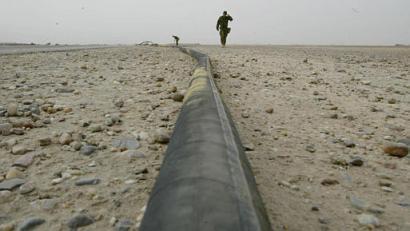Over Baghdad's international airport, seized last week by U.S. troops, a coalition A-10 "Warthog" warplane was shot down Tuesday, believed to be the first coalition aircraft downed by an Iraqi surface-to-air missile. The pilot ejected safely and was recovered by U.S. ground forces nearby. Meanwhile, members of the Army's V Corps entered Baghdad from the north early Tuesday - the first reported movements of U.S. troops in the capital from that direction. Troops were previously known to have entered the capital from the south and southeast. Brooks said the V Corps units' defeat of Iraqi forces positioned in the north "opened up an opportunity for us to continue operations on a different line toward the center of Baghdad from a different direction." He refused to elaborate except to say that the strike "may have opened a hole in the north" that commanders might exploit. He said most of the Republican Guard defensive line ringing Baghdad's south had been destroyed, and that those Iraqi solders hadn't managed to move into Baghdad. Baghdad itself was seeing intense urban combat that can result in deaths and injuries to civilians and bystanders. Two journalists were killed Tuesday when U.S. troops fired on the Palestine Hotel after receiving fire from the area. "We know that as we conduct operations inside of Baghdad we should anticipate attacks from unexpected locations, that some of the military actions might be unconventional in nature, whether it's the use of car bombs or whether it's ambushes, the use of snipers, or certainly the consistent pattern we've seen elsewhere of using civilians as shields," Brooks said. "We can only be reminded that the risk increases for the population as we do these operations," he added later. "But we have to remain focused on our objective of removing this regime before there's greater loss of life." At times, the Iraqi forces include formations of 20 to 60 vehicles, including T-72 tanks or civilian trucks outfitted with military weapons. "Often, all of those vehicles are destroyed - any vehicles that are encountered," Brooks said.
"Like other places, it is possible that we may never be able to determine exactly who was present without some detailed forensic work," Brooks said. "That's one of the circumstances that we have to deal with as we go through this campaign." |

